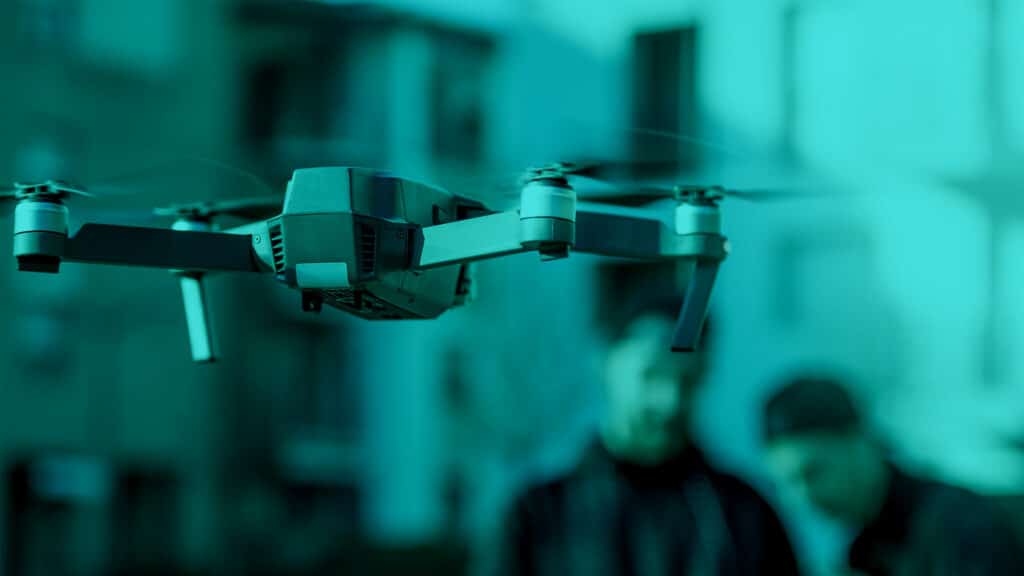Good drone, bad drone: Kazakhstan wants to teach youth, but fears the consequences

A debate is unfolding in Kazakhstan over the future of civilian drones, balancing the goal of nurturing a tech-savvy new generation with rising concerns about the potential for misuse.
While the government plans to introduce formal training in drone design and operation at the college level, lawmakers are simultaneously calling for much stricter regulations on the public’s ability to acquire and use unmanned aerial vehicles (UAVs).
Tighten regulations
On June 25, MP Yelnur Beissenbayev submitted a parliamentary inquiry to Prime Minister Olzhas Bektenov and Defense Minister Dauren Kossanov, warning that while modern drones have civilian benefits, they could also pose significant security risks.
«Such technologies can extend beyond peaceful use and become tools in the hands of criminals,» Beissenbayev said. «Imagine a public event — a concert, football match or mass gathering — where a supposedly ‘toy drone’ hovers over the crowd, but danger lurks inside.»
He noted that while drones weighing 250 grams or more are currently required to be registered in Kazakhstan, enforcement remains weak. Devices weighing up to 15 kilograms are still sold freely in stores.
«For instance, the U.S. uses a Remote ID system, where every drone weighing 250 grams or more transmits a digital ‘passport’ that includes the serial number, coordinates and operator information,» Beissenbayev said.
To mitigate potential threats, the MP proposed several regulatory measures:
- Introduce mandatory electronic identification (Remote ID) for all drones weighing 250 grams or more.
- Implement «black boxes» to record and track flight data.
- Require licensing of drone manufacturers and unique labeling of drone components.
- Strengthen administrative and criminal penalties for illegal assembly and use of drones.
Drone obsession
Once primarily associated with military use, drones are now employed in a wide range of civilian applications — from package delivery and infrastructure inspection to filmmaking and search and rescue operations. This broad appeal, fueled by rapid technological advances and an expanding commercial market, has contributed to a growing «drone obsession.»
In the summer of 2024, Kazakhstan’s Civil Aviation Academy launched a training course focused on UAVs and related systems.
Some entrepreneurs have predicted that cargo deliveries by drone could become a reality in the country within the next few years.
In January 2025, during a government meeting marking the Year of Working Professions in Kazakhstan, Minister of Transport Marat Karabayev stated that demand for drone pilots is expected to surge nationwide. The following month, Minister of Education Gani Beisembayev announced that technical and vocational colleges across Kazakhstan would begin training specialists in both nuclear energy and drone design. These programs will draw on Hungary’s expertise in training nuclear power specialists and China’s experience in IT and drone design.
Military drones
On June 1, Ukrainian drones struck multiple Russian military installations, including four airbases located in the Murmansk, Irkutsk, Ivanovo, Ryazan and Amur regions. Ukrainian President Volodymyr Zelenskyy stated that the operation, codenamed «Spiderweb,» was carried out by the Security Service of Ukraine (SBU) on Russian territory, near the regional headquarters of the Federal Security Service (FSB). In the aftermath, Russian Telegram channels accused Kazakhstan of importing drones that were allegedly used by Ukraine in the large-scale attack.
In a separate development, an unidentified drone crashed in western Kazakhstan on June 19, the fifth such incident this year. Residents in the Mangystau region discovered a remotely operated aircraft, continuing a pattern of drone crashes previously recorded in the West Kazakhstan region.
Military observers noted that the aircraft involved in these incidents closely resemble Russia’s Geran-2 and Orlan-10 drones. Kazakhstan’s Ministry of Defense stated that drones found in the region originated from Russia’s 926th launch test site near the border, though it did not provide additional details.


